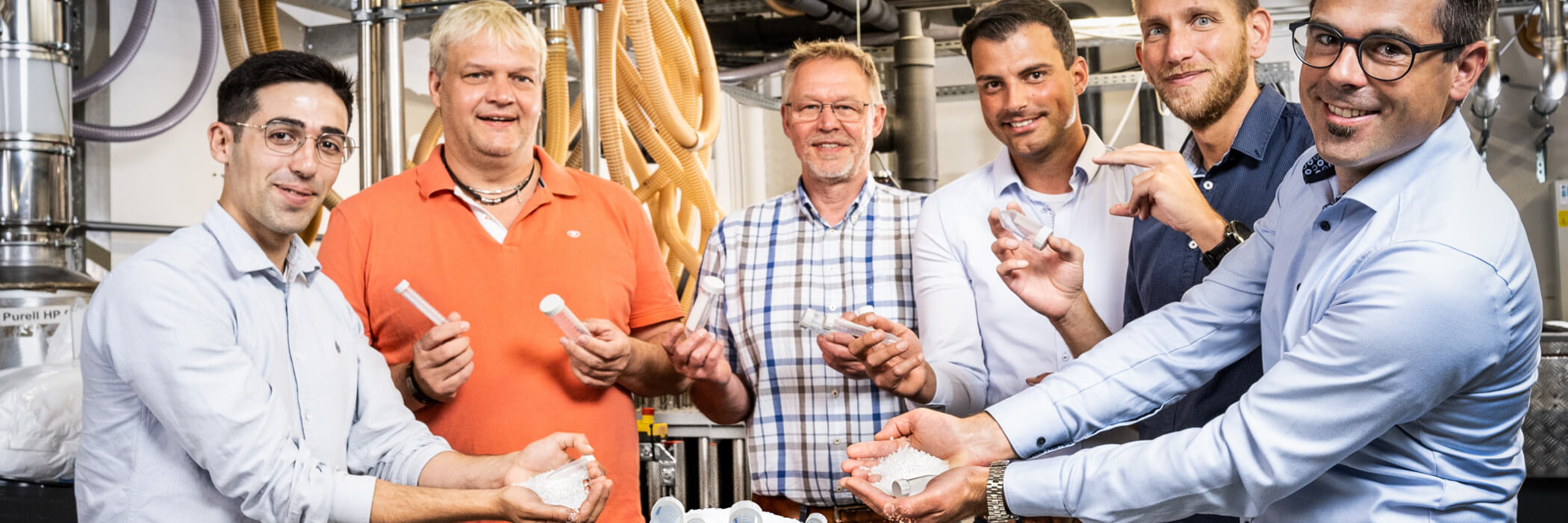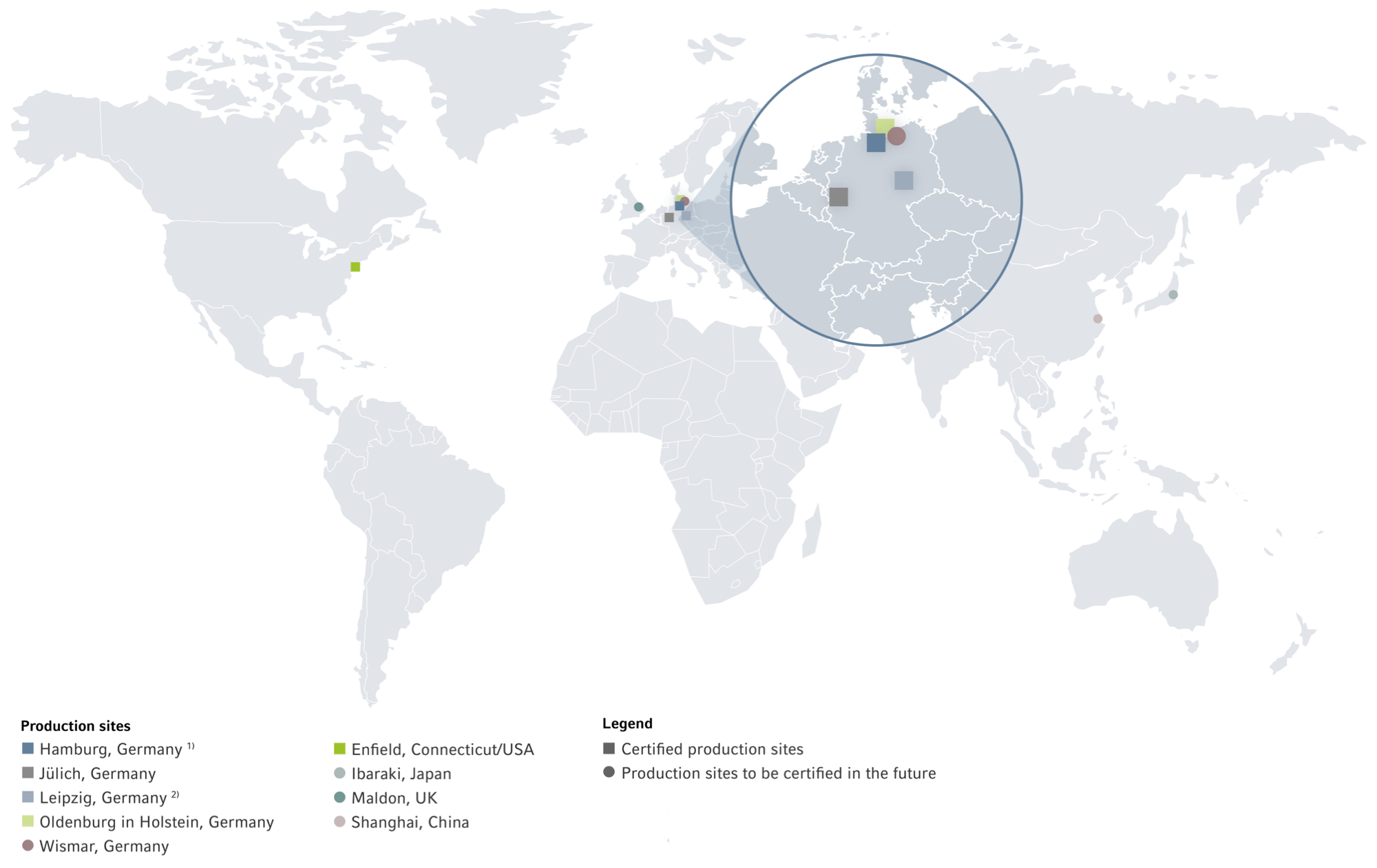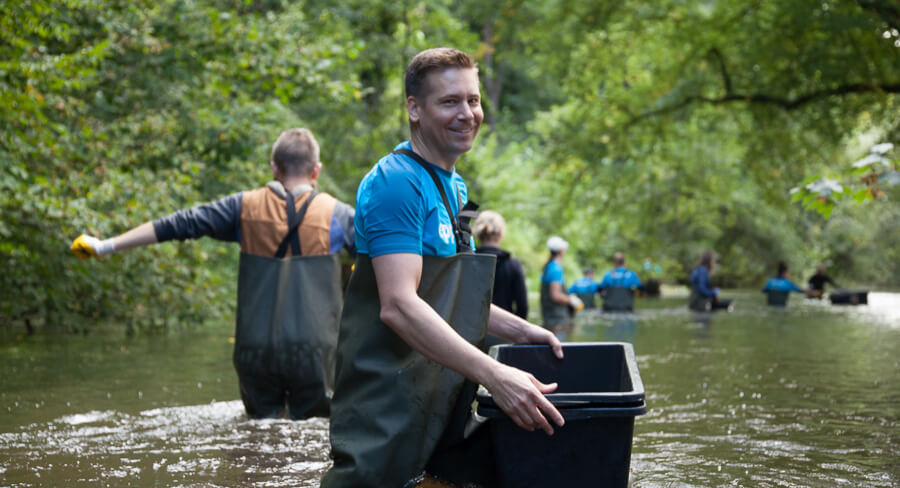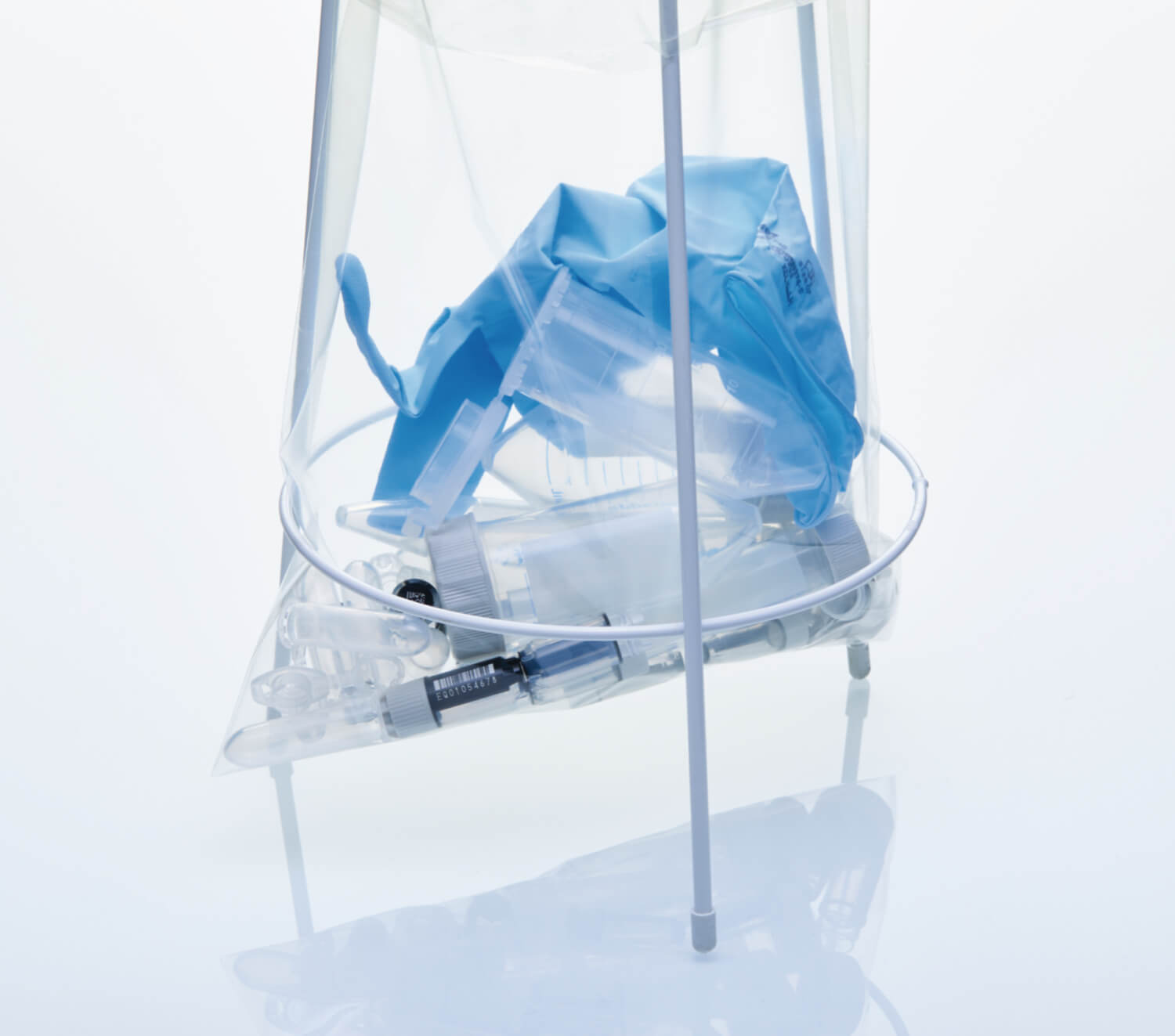
Environment & Resources
The use of natural resources currently exceeds the safe scope of human action determined by the planet’s limits. At the same time, our stakeholders place increasingly high demands on the environmental and social compatibility of our business activities, including the conservation of resources in our products, packaging and processes. For a world worth living in – today and tomorrow – we strive to reduce the environmental impact of our business activities and make a positive contribution to protecting the environment.
Our ambition is to take on a leading role in the industry and to minimize resource consumption where it is most effective for us and for our customers. With this in mind, we focus on efficient and alternative solutions for packaging and consumables, and we introduce recycling and reuse programs where possible. As we move toward that goal, we are also guided by the environmental principles of the
Global Compact, which we have signed.
To live up to our aims, we are careful to conserve the raw materials we need to produce our products. In addition, we are increasingly reducing the use of materials through new product design. We are using more and more recycled materials or materials made from renewable raw materials and ensure that these are sourced sustainably. Already in the development process, Eppendorf defines environmental requirements for each stage of the product life cycle. We also take care to ensure efficient use of mainly green energy and use more and more recyclable materials. Last but not least, the high quality and services of our products help guarantee that they enjoy a long lifespan, which also contributes to conserving resources.
Efficient use of resources is also an area of focus for us in our work with packaging and consumables. In line with the concept of the circular economy, we concentrate specifically on ensuring that the materials we use can be reused. Our aim is to use less and less expendable material and to avoid unnecessary waste – and to set the industry standard. For this reason, we are currently working on a comprehensive resource strategy for our key topics of packaging and consumables.
Environmental management certification
Our goal is to minimize the potential negative impact of our business activities on the environment. The framework for our environmental actions as a company is the Eppendorf Environmental & Safety Mission
(HSE Mission). which applies throughout the company. It stipulates that measures to reduce and prevent environmental impact should be identified, implemented and checked on an ongoing basis to assess their effectiveness. We achieve this goal through our certified environmental activities based on the ISO 14001 standard. Our environmental management system allows us to achieve systematic improvement in our environmental performance and manage change processes effectively.
ISO 14001 Certified Production Sites of the Eppendorf Group
Download(PNG, 148 KB)

2) Production site Leipzig includes two production locations of Eppendorf Zentrifugen GmbH.
ISO 14001 certification for specific locations
By the end of 2022, 66% of our production locations around the world held the ISO 14001 environmental management certification. Five entities in Germany have had environmental management certification since 2013. Further sites are to be added in the years to come; a certification strategy that maps out these actions was adopted by the Management Board in 2021. In 2022, the locations in Jülich, Germany, and Enfield, USA, received ISO 14001 certification. For 2023, another certification according to this standard is planned.
Performance indicators
As part of our annual ISO 14001 management review, we identify, analyze and evaluate various performance indicators such as total waste volume and waste volume in relation to production output. In the process, we distinguish between performance indicators that apply company-wide and those that relate to specific sites. Over the course of our successive ISO 14001 location certifications, we develop standardized reporting for these key indicators. We also analyze financial indicators to study the cost-effectiveness of the measures we have put in place.
Organization
The Management Board and the managing directors who are in charge of the operational business are responsible for environmental management. The Management Board makes all strategic decisions and confirms operational projects and objectives within the scope of the ISO 14001 management review. Depending on the project and location, operational implementation is handled by the local health, safety and environment (HSE) managers in cooperation with global specialists, facility managers, operations managers and/or additional specialists.
Raising awareness among employees
Every year, the Eppendorf Academy offers online training courses on environmental topics and environmental management at Eppendorf, which all employees of the Hamburg, Oldenburg and Jülich locations are required to complete. In Enfield in the USA, employees also received training on environmental topics in 2022. There are plans to add yearly training on environmental topics at other locations in the future.
Standards & guidelines
The main rules that apply to us in Germany are the stipulations of the German Circular Economy Act, Commercial Waste Ordinance, Packaging Act and Electrical and Electronic Equipment Act. In addition, the requirements of the Federal Water Act, the Federal Immission Control Act as well as the Ordinance on Hazardous Substances and the EU Waste Framework Directive apply. International waste laws for sites outside Germany have not been documented systematically at this time. In the future, we will observe international waste laws and further areas of law within the scope of our ISO 14001 certification.
Additional guidance is provided by our company-wide HSE Mission, which is accessible to all employees in German and English on the intranet. It sets out our mission, ambitions and pledges relating to environmental protection and the fields of safety and health.

Ecological commitment & involvement: pitching in to help
2022 marked the fifth time that Eppendorf participated in the renaturation of the Alster river in Hamburg-Poppenbüttel, near the company's headquarters, as part of an initiative called “Wi mook dat!” (We can do it!). Employees of Eppendorf and its subsidiary Starlab traded their desks for wheelbarrows and gloves to actively contribute to the conservation of the habitats of kingfishers and otters. The annual, educational event promotes both conservation and team spirit among colleagues.
Waste & recycling
GRI 301/3-3, 306/3-3, -1, -2
At Eppendorf, waste arises at every stage of the value chain. Waste includes not just household waste, wastewater and industrial waste, but also hazardous materials originating in laboratories, our production and electronic products. Our goal is to prevent waste to the greatest possible extent and reduce it where prevention is not possible. One of our strategic areas of focus is reducing the share of fossil primary plastics used in our overall production operations through measures such as new and more efficient product construction.
Waste prevention and reduction are highly important to Eppendorf, due in large part to our customers’ increasingly stringent requirements. This is why our materiality analysis has identified related topics as being of high strategic importance. Our activities in this area focus on three aspects: First, we aim to minimize resource consumption and the waste arising from our own marketing materials and transportation packaging. A further goal is to reduce the waste arising at our customers’ end through the use of our consumables as well as from the packaging of our products excluding consumables.
We also strive to optimize our process and plant engineering in such a way as to prevent waste and reuse valuable raw materials. For example, we adapt processes to minimize production scrap and use a recycling method at the Leipzig location and the Eppendorf Liquid Handling GmbH at the Hamburg location to separate and reuse cooling lubricants and aluminum and brass shavings. At the Oldenburg location, plastic waste from production is forwarded for reuse. In 2023, an internal plastic waste reuse project is planned for Enfield.
Site-specific waste reduction targets are set in each case as part of our ISO 14001 certification. We launched a project to capture waste data across all production sites in 2021. Going forward, the goal is to use these data as part of a resource strategy which we are currently developing and which will apply worldwide, as well as to further enhance our internal sustainability controlling structures and activities. The key indicators will be disclosed as part of our sustainability reporting in the future.
At Eppendorf, waste management is a part of our environmental management activities. Local HSE managers or site waste managers are responsible for these aspects at individual locations.
We have defined a company-wide standard for the handling of waste. The standard stipulates that waste must be collected separately by specific categories and provided to waste disposal entities in suitable containers. All waste must be classified and logged in a waste record. Hazardous waste is labeled separately, and records of disposal are kept. The standard also stipulates that only specialized waste disposal companies can be used and commissioned for disposal purposes.
In line with these specifications, disposal is handled at all German sites and in Enfield in the USA by specialized partners selected by Eppendorf. The disposal companies provide waste balance sheets. At the Hamburg site, an external service provider also handles internal collection and rough pre-sorting of waste. The disposal processes are monitored each year under our certified environmental management system.
At 66% in the year under review, the reuse and recycling rate of our waste is high (2021: 76%). Even with positive site development and increased production volume during the year under review, our waste volumes and energy efficiency have remained relatively stable in 2022.
Aluminum is an important material at Eppendorf. Aluminum dust is created during CNC processing for the production of centrifuges. The particles are contained in cooling lubricant used to protect our equipment against high temperatures. To be able to reuse both the aluminum dust and the cooling lubricant as it emerges from the cycle, we introduced an innovative recycling method at the Leipzig site in 2013. The aluminum particles are captured and passed through a hydraulic press, which compacts the material at high pressure into small briquettes that can then be reused. This compacting procedure also releases a large portion of the lubricant that is used for cooling, meaning that it can also be reused. As a result, this method has both ecological and economic benefits.
In recent years, we have shifted our paper documentation to digital systems across many areas. We also increasingly communicate via digital channels, internally and externally, which has allowed us to significantly reduce our use of paper and toner.
Beyond that, we are careful to prevent unnecessary waste at our offices and logistics centers. All offices at our central location in Hamburg have been equipped with paper recycling bins since 2005.
Total waste by category in t
GRI 306-3
(PNG, 46 KB)

Consumables at our customers’ end
In recent years, oil-based polypropylene plastic vessels have become irreplaceable in laboratories around the world as an alternative to glass vessels. They provide the quality standards needed in increasingly demanding research. In addition, many experiments are now conducted at the microliter scale. This requires vessels and tips with ultra-small dimensions, which either cannot be manufactured out of glass, or which would be prohibitively expensive to produce. This is the growing challenge in respect to sustainability. Thus, Eppendorf increasingly focuses on the use of resource-efficient and sustainable materials when developing new innovative products.
Optimizing consumables & researching alternatives
We aim to reduce the use of material quantities. One way to achieve this is through the optimization of wall thickness and dimensions of our consumables. However, we are constrained in these efforts by both the necessary mechanical and chemical stability of the products and the production conditions. Another issue is that the dimensions of vessels and plates are often based on international standards for size, with precisely defined inserts. As things currently stand, we have optimized our consumables with regard to wall thickness and dimensions.
Our development departments have also been hard at work researching whether and to what extent recyclates can be used in the production of disposables. Recycled materials can currently not be used for single-use items that come into direct contact with samples. Sample tubes made of plastics that originate from mechanical recycling may contain residual contaminants that contaminate valuable samples and render them unusable. For single-use items without sample contact, we are researching the use of recycled materials and the feasibility and acceptance of return systems.
An innovative solution to address the problem is the use of biobased raw materials, which we are continuously testing for our sample-carrying products. Since August 2022, we have for the first time been in a position to offer special micro test tubes – the Eppendorf Tubes® with screw caps in various capacities – in a biobased International-Sustainability-and-Carbon-Certification (ISCC)-Plus-certified line, without compromising product quality and performance. In accordance with the ISCC mass balance approach, the tubes are made with 90% certified polypropylene based on renewable reused raw materials – such as recycled food oil waste and residues – and only 10% fossil raw materials. Fossil raw materials are thus saved by 90% and biobased waste and residues are given a second life. The use of 100% renewable raw materials is planned for 2023.
Preventing & recycling waste within customers’ operations
One key aspect of our efforts to protect and conserve resources is reducing the plastic waste generated in our customers’ operations. The challenge is that this plastic is often contaminated with biological or chemical substances or radiation, making it potentially harmful to human health and the environment. Plastic-based laboratory waste that has come into direct contact with samples is typically incinerated. Recycling is either impossible or prohibitively expensive with the technologies currently available such as the energy-intensive pyrolysis process. In some cases, incineration of laboratory waste is also required by law.

Our customers can also reduce the use of resources such as plastics, reagents or chemicals as well as waste generation by using other systems. For example, for higher sample throughput, they can switch from the 96-well scale to our 384-well microliter system for dispensing the smallest quantities of liquids. Instead of four 96-well plates, only one 384-well plate is required, thereby reducing plastic waste by 75% and sample and reagent materials by 50% each.
However, our single-use items also contain plastic elements that do not come in direct contact with sample materials, including single-use racks, reusable boxes for storing pipette tips and external packaging. The reusable boxes can be autoclaved –i.e., sterilized by autoclave – up to 100 times and equipped with fresh tip trays via a refill system. Eppendorf considers these to be auxiliary products, which enable the correct use of the products themselves (such as pipette tips). Depending on how these items are used in the laboratory, they may be classified as non-contaminated waste. The definition depends on the local regulations of the biosafety and waste management officers. We urge our customers to separate product packaging and auxiliary products as much as possible prior to moving the items into the laboratory where they may come into contact with sample material or contaminated work surfaces. Sorting at this early stage may allow or facilitate recycling of certain plastic elements.
Designing packaging efficiently
Wherever possible, we avoid unnecessary use of materials for our packaging and reduce package sizes and material thickness. We are also always looking for sustainable alternative packaging materials.
Common types of packaging at Eppendorf:
Primary packaging such as tip racks or boxes and trays is frequently associated with the product itself, as many product characteristics, such assterility, apply only in combination with the primary packaging.
Product packaging is the term used for the volume of materials surrounding the product during the phase between the final stage of production and the customer-specific use in the laboratory. Depending on the product type and weight, cardboard packages of varying thickness are used.
Transportation packaging is the name we use for specific outer packages that hold multiple products of the same kind and their product packaging. Transportation packaging is designed for efficient, secure shipping. It consists primarily of cardboard with a high percentage of recycled fiber.
Returnable packaging, also known as reusable packaging, is used at various Eppendorf plants to procure component assemblies or parts from suppliers. We send the packaging back to the supplier after the components inside it have been used. Our use of returnable packaging is limited to regional suppliers, as the cost of returning empty packaging to the supplier would otherwise outweigh the savings on materials.
Over the years, we have developed various systems for designing packaging more efficiently or eliminating it altogether. For example, we introduced refill systems for pipette tips consisting of box and tray back in 2002. In 2021, we were able to reduce the amount of polypropylene in our single-use racks by 19% to 35%, depending on the rack size, by means of an optimized product design. Beyond that, we are always looking for alternative materials for primary packaging.
When it comes to product packaging made of cardboard, we take care to ensure that an increasing proportion of recycled material is used. Depending on the product category, the current proportion is between 70% and 100%. The proportion of recycled material is increased if packaging stability and transport safety are not jeopardized. In addition, some product packages have already been designed to use no plastic at all. Cardboard-based holders provide adequate protection for these products. We plan to ramp up our efforts to use these types of packaging in the future, as long as this does not have a negative impact on the overall carbon footprint.
Rethinking marketing materials
At Eppendorf, our marketing materials include paper-based brochures, magazines, catalogs and sample packages containing single-use or promotional items. All of our paper marketing documents can be recycled using standard methods. We reduce our use of paper-based documents wherever possible. The COVID-19 pandemic and the social distancing requirements associated with it have also spurred the further digitalization of our marketing materials.
Although we continue to use paper products, we strive to design them as efficiently as possible. For example, our product catalog features more and more products each year, but its weight and volume have remained relatively constant thanks to smaller fonts, thinner paper and the inclusion of QR codes for users to read further information online. Climate-neutral printing and certified paper have also reduced the catalog’s carbon footprint. Many customers use the Eppendorf product catalog for years as a reference work in their laboratories. The catalog can be recycled with other paper, plus it is also available in digital format.
We switched to sending out newsletters exclusively via e-mail several years ago. Recipients still have the option of requesting printed versions of our product brochures. To conserve resources in the form of energy and materials, we rely on demand-driven printing for our brochures and flyers. Prior to printing, we conduct regional surveys to determine how many copies will be needed. Our globally used brochures are printed in Hamburg. The paper used until 2021 was 100% certified virgin fiber. Since the beginning of 2022, 100% recycled paper has been used for printing. The respective print runs will continue to be reduced significantly.
Eppendorf publishes magazines on overarching laboratory-related topics twice a year. These magazines include our BioNews and Off the Bench titles. Both publications are printed on a climate-neutral basis and are also available online.

